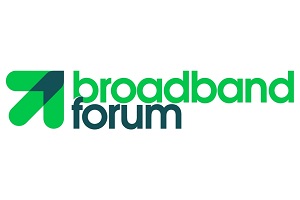Improved network quality and user experience to be showcased in CloudCO demo

Fremont, United States – As the broadband industry migrates to software defined open networks, 14 vendors, service providers, and consultancy companies are coming together to demonstrate greater automation, reduced network congestion and greater interoperability.
Improved quality and user experience in case of Wi-Fi or network congestion, better utilisation of network resources, and zero-touch service provisioning from multiple vendors will be delivered at this year’s CloudCO demo from Broadband Forum at this year’s Network X (previously Broadband World Forum). This has been enabled by this year’s sponsors: Altice Labs, Deutsche Telekom, Hewlett Packard Enterprise, Juniper Networks, Nokia, Radisys, Reply and Zyxel.
“CloudCO provides a network operator with a “step by step” approach to migrate from existing infrastructure while still amortising their existing hardware investments. Our work is enabling operators to disaggregate their networks, virtualise functionality, and move to the SDN driven solutions of the future,” says Broadband Forum technical chair Lincoln Lavoie. “The open standards work is available to any vendor so it can truly enable the flexibility and commercial ability for the operators to select any vendor who complies with the open interfaces and specifications inside their CloudCO enabled network.”
This multi-vendor environment is highlighted by so many participating companies at this year’s demo including Altice Labs, BISDN, Domos, DZS, Hewlett Packard Enterprise, University of New Hampshire InterOperability Laboratory (UNH-IOL), Juniper Networks, Nokia, Open Networking Foundation (ONF), Outsys, Radisys, Reply, Vodafone and Zyxel. Testing and integration of the demo was carried out by the UNH-IOL, an independent provider of broad-based testing and standards conformance solutions for the networking industry.
The CloudCO framework brings tangible benefits to the industry and helps operators migrate from legacy networks traditionally based on many individual network elements to a truly open software defined access network. This virtualisation and disaggregation of the network can help operators build their network based on their specific requirements, and they can have confidence that these components can interoperate with each other.
The demo includes work from the Forum’s quality experience delivered (QED) project that probes the network to recognise network performance (packet loss, latency) between the subscriber premises and any location in a provider’s network. Another focus of this year’s demo is zero-touch service assurance enabled by the automated intelligent management (AIM) framework, along with QED to assure the best service path and user experience in case of Wi-Fi congestion or network congestion, handled through closed loop automation.
An example use case will be showcased of a home Wi-Fi network with a demanding application, and the quality of a 4K video being suboptimal when streamed. In the demo, network performance is measured by the probes embedded in the network and Residential Gateway and reported to the AIM controller, where the quality issue is diagnosed. The Wi-Fi application embedded in the CPE then takes action and performs traffic steering on the Wi-Fi layer, resulting in improved quality for the video stream.
“Over the last decade, network operators have recognised the need to take advantage of innovative technologies and solutions to minimise OPEX while continuing to scale their networks for growth,” says Ken Ko, managing director at Broadband Forum. “This is especially true in the home network to minimise customer complaints and on-site maintenance, as well as anticipate faults and degradation via analysis of the network and traffic conditions to help establish expected service levels before the user perceives a service issue. These network element components can be implemented as virtualised functions in a cloud-native environment, and developed and deployed seamlessly in a timely fashion.”
Zero-touch service provisioning and set-up with virtualised management and control functions in a multi-vendor environment will also be showcased during the demo. Zero-touch service provisioning was previously limited to one vendor, but this is no longer the case, and the multi-vendor capability is of great value to service providers with optical line terminals (OLTs) based on different implementations from different vendors that can all be managed on a single access management platform. This approach can enable automation for network operations with minimal human intervention, networks can become more agile and reduced CAPEX and OPEX can be delivered.
The CloudCO demo also encompasses work on the disaggregated BNG based on Broadband Forum’s specification TR-459 that includes separation of control and data planes to enable the best utilisation of network resources and efficient paths. The operator can then optimise access to the Internet using session steering, directing traffic through the best BNG user plane for each subscriber.
In addition, for the first time the demo will highlight the interworking between Broadband Forum and the ONF to align their architectures for access network virtualisation and enable interoperability. The framework allows integrating OLTs with the established VOLTHA framework in a CloudCO environment via the Broadband Forum specified APIs. This extends the addressable market for suppliers supporting this solution, and operators looking to adopt standardised open-source solutions.
Interested in attending this year’s Network X? Reserve your seat now within the BASe Workshops here. Take a look at last year’s CloudCO demo here.
Comment on this article below or via Twitter @IoTGN
